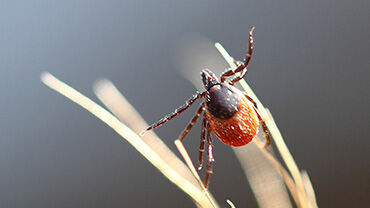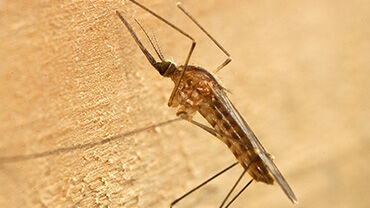Literature review on the state of biocide resistance in wild vector populations in the EU and neighbouring countries
This literature review, covering the period from 2000 to January 2022, assessed the state of knowledge on biocide resistance in wild vector populations across the EU/EEA and neighbouring countries.
Executive Summary
In the light of (re-)emerging vector-borne pathogens, European Union/European Economic Area (EU/EEA) countries are increasingly implementing intervention strategies in an attempt to decrease their public and veterinary health burden. In many cases, vector control is essential for preventing and controlling the transmission of vector-borne pathogens, as (prophylactic) drugs and/or vaccines are often unavailable. There are a wide array of control measures available, often using a biocide in their approach. The extensive use of these chemicals is known to give rise to resistance in the target vector populations, undermining the efficacy of the biocide and the control efforts. The aim of this report is to assess the state of biocide resistance among vectors present in the EU/EEA region through a literature search and contacting the members of the VectorNet Entomological Network and their
intermediaries.
A literature review was carried out covering the period 2000−2021. Biocide resistance (BR) assessment studies were included when performed on wild vector populations (mosquitoes, sand flies, biting midges and ticks) from the EU countries and selected neighbouring countries. Additional data were obtained through a questionnaire sent to the members of the VectorNet Entomological Network. Studies of species belonging to one of the four vector
groups were eligible for inclusion and there was no limit to the number of species that could be included. Studies on species not belonging to these vector groups were excluded. There were no exclusion criteria for the type of biocide tested.
We found that biocide resistance assessment studies have mainly been conducted in countries around the Mediterranean region and on mosquito species such as Culex pipiens and Aedes albopictus . Fewer studies have been done on ticks and sand flies, and no studies on biting midges were identified in this review. Resistance has been confirmed in multiple species and regions and for multiple biocide classes. Culex pipiens and Aedes albopictus were found to be resistant against biocides from the pyrethroid, organophosphate, organochlorine and carbamate classes. Knock-down resistance (Kdr) allele mutations have also been detected in these two species. A large amount of data was found through the literature search. However, the totality of studies does not provide a good insight into the status of biocide resistance in Europe due to the fact that the studies are largely fragmented in time and space and the results are not always reported according to predefined criteria. Predictions based on these results are premature, but biocide resistance is emerging and is likely to hinder current and future vector control efforts. We recommend further research, using consistent and standardised methods, to monitor the spread and development of resistance in vector species.
Based on literature review results and the data provided by the VectorNet Entomological Network members, the implications for public health practice can be summarised as follows:
- In countries where authorities consider deploying vector control, biocide resistance monitoring results in the target vector species could inform estimates of expected biocide effectiveness and the use of biocides in vector control activities.
- The biocide assessment studies would need consistent and standardised methods to facilitate an EU-wide view of the vector species’ biocide resistance status.
- Where availability study results warrant this, it could be of value to explore (in the context of EU biocide legislation) vector control intervention mixes that are not (or less) based on biocides.
- There is a need for further investigation to improve the use of molecular assays as resistance detecting methods.
- Cooperation between biocide resistance researchers and professionals from the public and veterinary health services involved in vector control could be useful to update biocide resistance monitoring data, generate risk maps, provide scientific and technical expertise to policy makers, and disseminate information among actors and countries.







